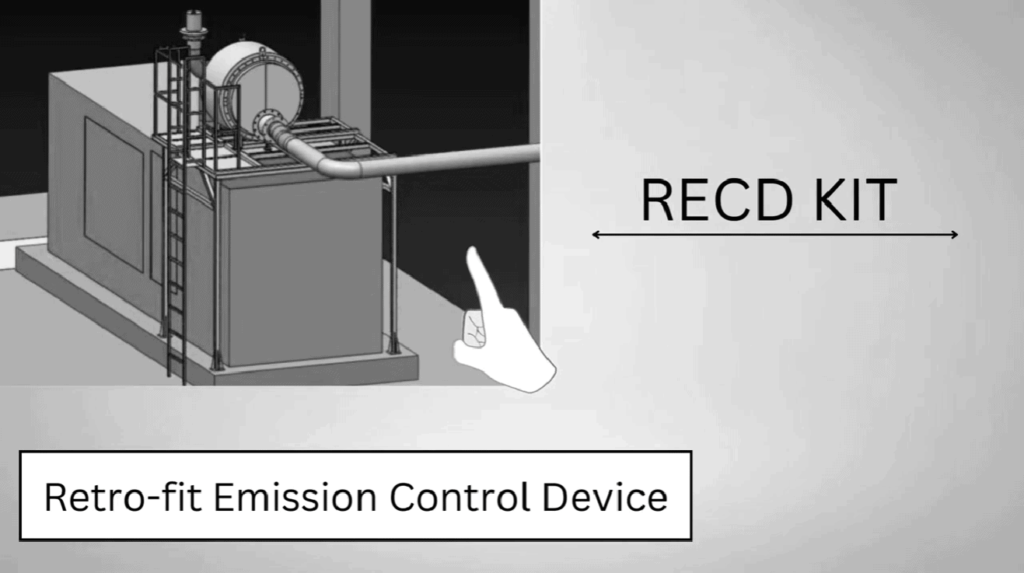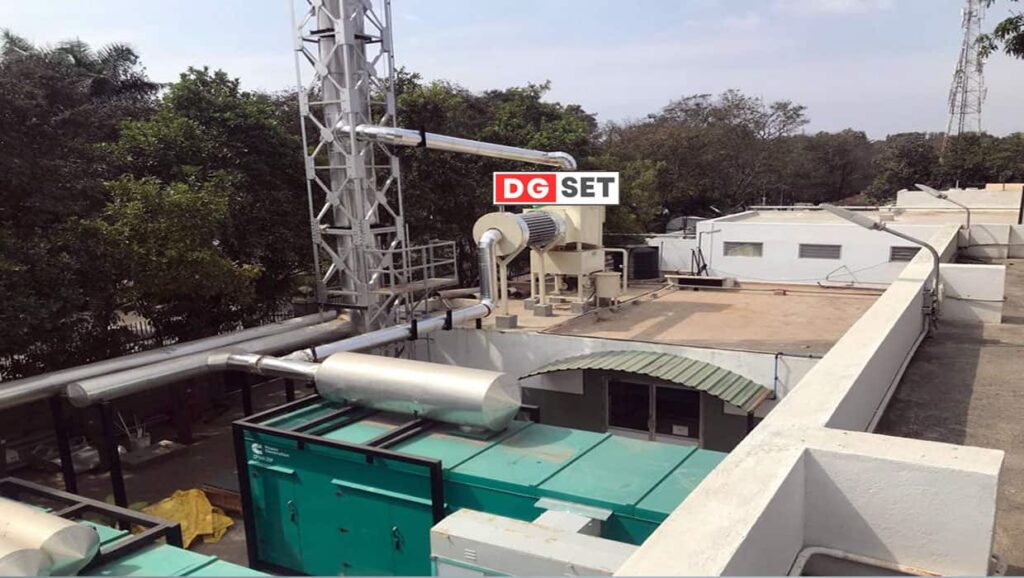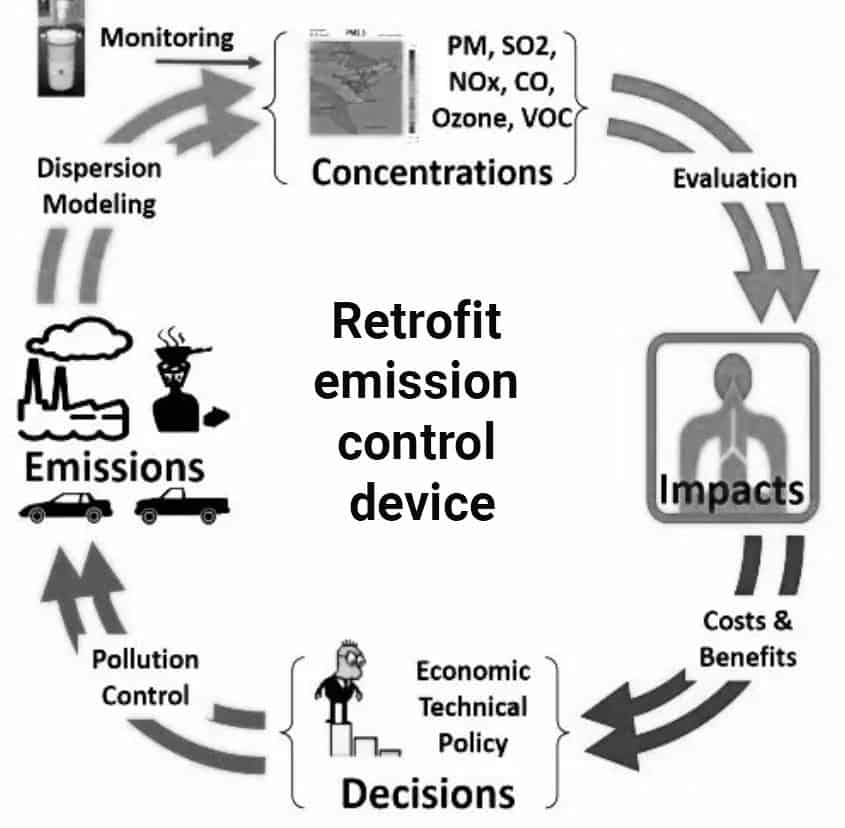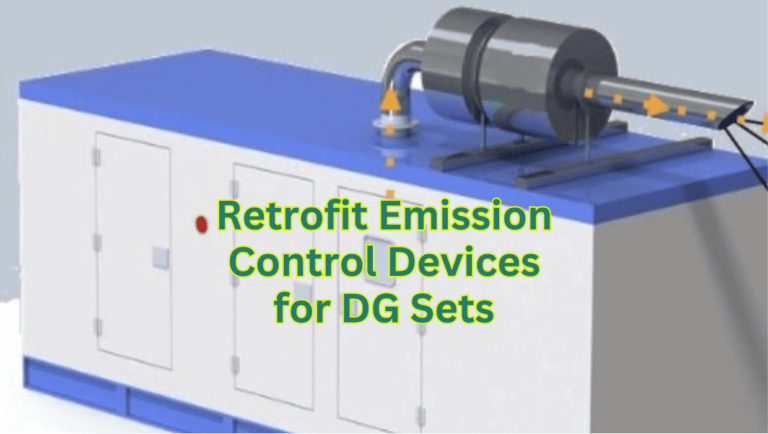Retrofit Emission Control Device (RECD) for DG Set: A Comprehensive Guide

Diesel generator sets (DG Sets) are commonly used in a variety of applications, including backup power generation and off-grid electricity supply. However, they are known for their high emissions of harmful pollutants, including nitrogen oxides (NOx), particulate matter (PM), and carbon monoxide (CO). This has led to increased regulatory scrutiny and a need for more effective emissions control solutions. Retrofit Emission Control Devices (RECDs) are one such solution, and they have gained popularity in recent years. In this article, we will provide a comprehensive guide to retrofit emission control devices for DG sets, covering their types, functioning, and benefits.
What are Retrofit Emission Control Devices (RECDs)?
Retrofit Emission Control Devices (RECDs) are add-on devices that can be retrofitted to existing DG sets to reduce their emissions. They are designed to control emissions of NOx, PM, and CO by converting these pollutants into less harmful substances before they are released into the atmosphere. RECDs typically consist of a catalytic converter, which uses chemical reactions to break down pollutants, and a diesel oxidation catalyst (DOC), which oxidizes unburned hydrocarbons and carbon monoxide.

Types of Retrofit Emission Control Devices (RECDs)
There are several types of Retrofit Emission Control Devices (RECDs) available in the market. The most common types include:
Diesel Particulate Filter (DPF):
This type of RECD is designed to trap and remove particulate matter (PM) from the exhaust stream. It works by using a honeycomb-like structure of ceramic or metal fibers to trap PM and then periodically burning off the trapped particles.
Selective Catalytic Reduction (SCR):
This type of RECD uses a chemical process to convert NOx into harmless nitrogen gas and water vapor. It does this by injecting a urea-based solution (known as diesel exhaust fluid) into the exhaust stream, which reacts with the NOx in the presence of a catalyst.
Diesel Oxidation Catalyst (DOC):
This type of RECD converts unburned hydrocarbons and carbon monoxide into carbon dioxide and water vapor by oxidizing them in the presence of a catalyst.
Lean NOx Trap (LNT):
This type of RECD uses a combination of a lean-burn engine and a NOx trap to reduce NOx emissions. It works by storing NOx in the trap during lean-burn operation and then periodically injecting a rich fuel mixture to release and convert the NOx into harmless substances.
Functioning of Retrofit Emission Control Devices (RECDs)

Retrofit Emission Control Devices (RECDs) work by reducing the emissions of harmful pollutants from DG sets. The functioning of RECDs depends on their type. For example, a DPF works by trapping PM in its honeycomb-like structure and periodically burning off the trapped particles. An SCR works by injecting a urea-based solution into the exhaust stream, which reacts with NOx in the presence of a catalyst to convert it into harmless nitrogen gas and water vapor. A DOC works by oxidizing unburned hydrocarbons and carbon monoxide in the presence of a catalyst to convert them into carbon dioxide and water vapor. Similarly, an LNT works by storing NOx in the trap during lean-burn operation and then periodically injecting a rich fuel mixture to release and convert the NOx into harmless substances.
Benefits of Retrofit Emission Control Devices (RECDs)
Retrofit Emission Control Devices (RECDs) offer several benefits, including:
Compliance with Emission Regulations:
RECDs are designed to reduce emissions of NOx, PM, and CO,which makes them an effective solution to comply with emission regulations.
Improved Air Quality:
By reducing the emissions of harmful pollutants, RECDs help improve air quality, which is beneficial for both human health and the environment.
Cost-Effective:
Retrofitting DG sets with RECDs is often more cost-effective than replacing them with new, lower-emission models.
Increased Lifespan of DG Sets:
RECDs can also improve the lifespan of DG sets by reducing the wear and tear on engine components caused by high levels of pollutants.
Enhanced Resale Value:
DG sets retrofitted with RECDs may also have a higher resale value, as they comply with emission regulations and offer improved air quality.

Installation and Maintenance of Retrofit Emission Control Devices (RECDs)
The installation and maintenance of Retrofit Emission Control Devices (RECDs) require specialized knowledge and skills. It is important to hire a qualified professional to install and maintain these devices to ensure their proper functioning and optimal performance.
During installation, the RECD must be properly integrated into the DG set's exhaust system to ensure that the exhaust gases flow through the device. The installation must also be done in compliance with local emission regulations and standards.
Maintenance of RECDs involves periodic inspection and cleaning to ensure that the device continues to function optimally. The frequency of maintenance depends on the type of RECD and the operating conditions of the DG set. It is important to follow the manufacturer's recommendations for maintenance to avoid damaging the device and to ensure its longevity.
Q: What is a Retrofit Emission Control Device (RECD) for DG Set?
A: A Retrofit Emission Control Device (RECD) is a device installed on a DG Set's exhaust system to reduce harmful emissions and comply with emission regulations.
Q: What are the benefits of installing a RECD on a DG Set?
A: Installing a RECD on a DG Set has several benefits, including compliance with emission regulations, improved air quality, cost-effectiveness, increased lifespan of DG sets, and enhanced resale value.
Q: What are the different types of RECDs available for DG Sets?
A: Different types of RECDs include Diesel Particulate Filters (DPF), Selective Catalytic Reduction (SCR), Diesel Oxidation Catalyst (DOC), and Lean NOx Trap (LNT). Each type has its own unique functioning and benefits.
Q: Can a RECD be installed on any DG Set?
A: RECDs can be retrofitted to most types of DG Sets, but it is important to consider factors such as the size and operating conditions of the DG Set when selecting the appropriate RECD.
Q: How does a RECD reduce emissions from a DG Set?
A: RECDs use different technologies such as filtering, catalyzing, and trapping to reduce emissions from a DG Set. These technologies help convert harmful pollutants into less harmful substances before they are released into the atmosphere.
Q: What is the installation process for a RECD?
A: The installation of a RECD involves integrating the device into the DG Set's exhaust system to ensure proper flow of exhaust gases through the device. It is important to hire a qualified professional to ensure compliance with local emission regulations and standards.
Q: How often does a RECD need to be maintained?
A: The frequency of maintenance for a RECD depends on the type of device and the operating conditions of the DG Set. It is important to follow the manufacturer's recommendations for maintenance to ensure optimal performance and longevity of the device.
Q: What is the cost of retrofitting a DG Set with a RECD?
A: The cost of retrofitting a DG Set with a RECD depends on factors such as the type of RECD, size of the DG Set, and installation and maintenance costs. However, in many cases, retrofitting with a RECD is more cost-effective than replacing the DG Set with a new, lower-emission model.
Enquiry
Conclusion
Retrofit Emission Control Devices (RECDs) offer a cost-effective solution to reduce emissions from DG sets and comply with emission regulations. They are available in different types, including DPF, SCR, DOC, and LNT, and each type has its own unique functioning and benefits. However, installation and maintenance of RECDs require specialized knowledge and skills, and it is important to hire qualified professionals for these tasks. By retrofitting DG sets with RECDs, we can improve air quality, increase the lifespan of DG sets, and comply with emission regulations.




need of RECD for business purpose